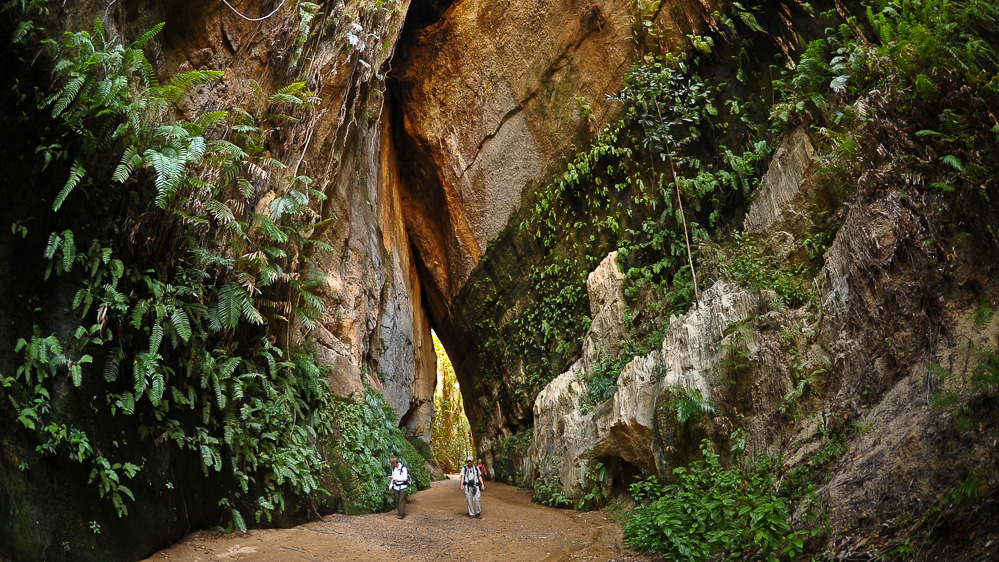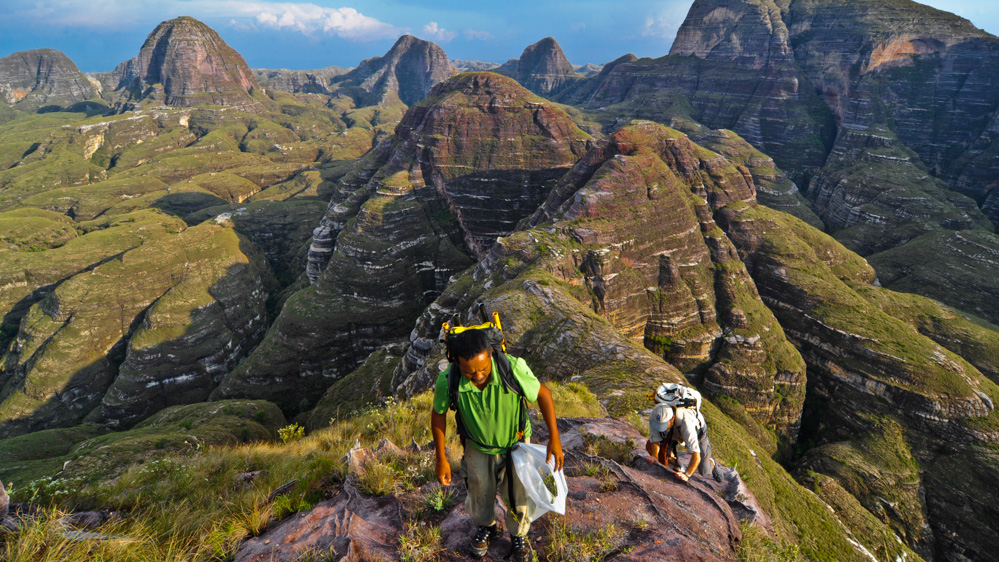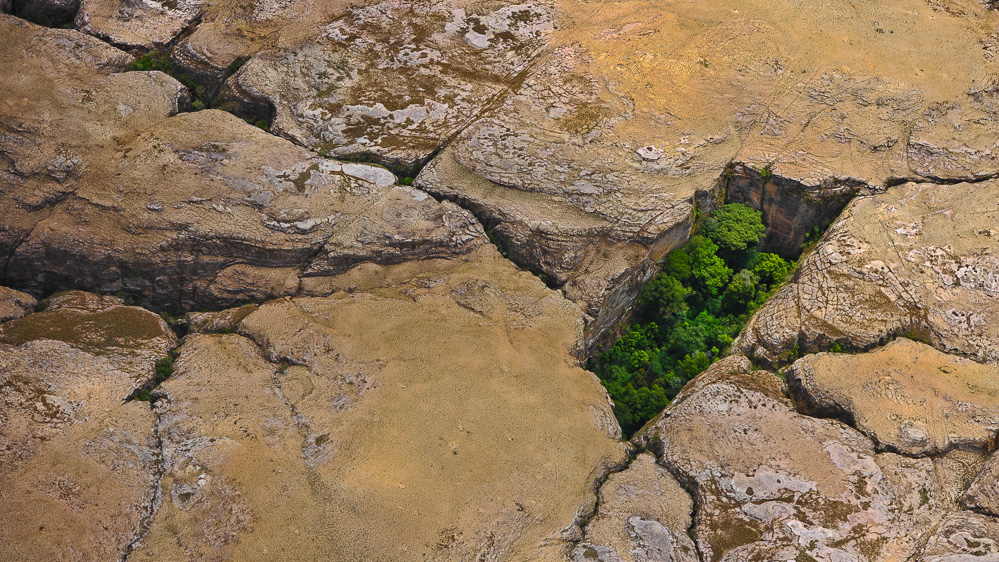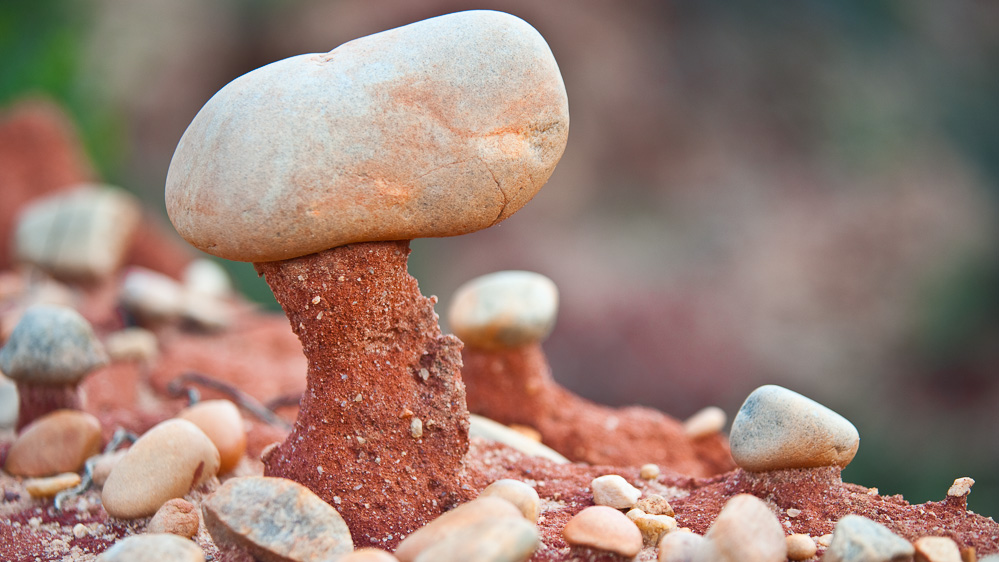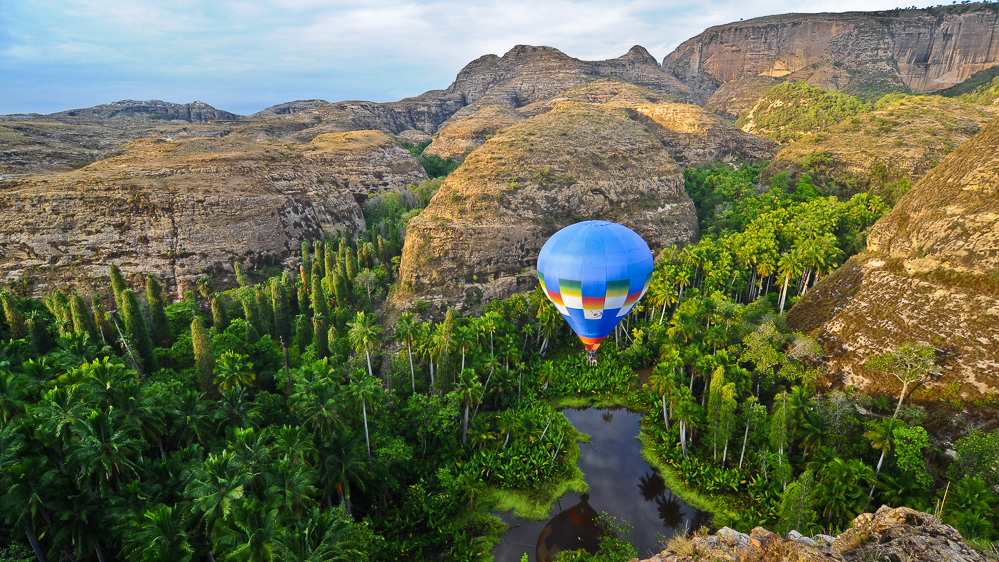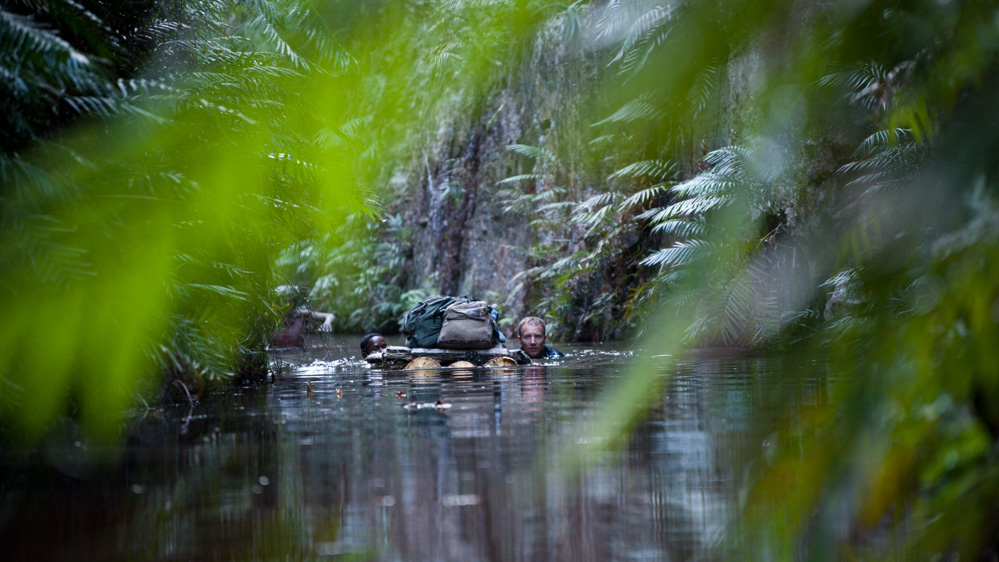Eco-volunteering in the Makay : As part of the conservation project long massif Makay, we will now organize eco-volunteer assignmentsBack to Ittoqqortoormiit | find out more. You can also find all the information about the Makay on the Makay protected area website.
Read more about the Makay project :
A maze of unexplored canyons
the Makay is among the most impressive works of natureThe Makay range spreads over an area of 150×50km. Made from the remains of the erosion of large massifs of crystallines rocks disappeared hundreds of millions years ago, the Makay is one of the most impressive works of nature. Among the patchwork of various ecosystems present in Madagascar, there remains a few little-known, relatively unexplored and undeveloped, sparsely populated areas, that present high chances for new discoveries. The Makay stands among them as an iconic Terra Incognitae : even on Madagascar itself, few people have heard of this ruiniform mountain range.
Life has taken to these hundred-meter deep valleys and has developed there in complete autarky for millions of yearsLocated in the central western part of the island, the Makay range is constituted of yellow sandstone and features high plateaus still partly covered with forest or bushy growth common to the dry climate of the Malagasy West. Spectacular erosion has carved the plateaus into a maze of deep canyons where a flora typical of humid ecosystems has developed, not unlike the evergreen forests of Eastern Madagascar. Life has taken to these hundred-meter deep valleys and has developed there in complete autarky for millions of years, filling every possible ecological niche. Isolated and preserved from human intervention, these biotopes have allowed animal species and ancestral plants to subdivide down to the point new species appear.
a haven for species among the most curious of the planetThus the Makay really became a refuge for nature, a haven for species among the most curious of the planet. Its isolation and topographical characteristics have to this day been slowing down exploration and scientific studies. The Makay remained unexplored until 2010.
The Malagasy enigma
Separated from the African mainland then from India respectively ~120-150 and ~90 millions years ago, the island of Madagascar raises numerous questions in the international scientific community, especially concerning the origin of some of its current biodiversity.
One of the biggest mystery of our planet's natural historyIndeed, several major evolutive lines endemic to Madagascar find their origin in successive waves of colonisation from African stock during the Cenozoic (>65 million years), meaning well after its isolation in the Indian Ocean. However the 450km-wide Mozambique Channel that separates Madagascar from Africa, along with the direction of its surface currents, creates an impassable barrier to the movement of terrestrial animals such as primates, carnivores and rodents. This question, simply put as « when, how and from where did these animals arrive to Madagascar ? » has been called one of the biggest mystery of our planet's natural history.
An ecosystem hanging by a thread
Wildfires are spotted frequently on the edge of the massif, but also in its core, destroying what nature took millions of years to create.Facing an out-of-control deforestation (over 90% of the forests of Madagascar have already disappeared) that threatens its exceptional biological wealth, Madagascar largely qualifies as one of the planet's hotspots. The Makay is unfortunately no exception to the rule and, if until now the steep canyons have kept Man away and preserved its natural treasures, the sky-high increase in wildfires that has endured Madagascar in the last years is a daily threat to its long-term survival. Wildfires are spotted frequently on the edge of the massif, but also in its core, destroying what nature took millions of years to create.
Its forests are also degraded by :
- the arrival of invasive species (zebus, bushpigs, etc.)
- extensive zebu breeding
- poaching
- the activities of an oil company
Three large-scale scientific expeditions in 2010 and 2011
First expeditions in 2004 and 2007Following a first exploration of the massif in 2004, Evrard Wendenbaum created the first topographic maps of the Makay using Google Earth. It allowed him to make the first independent crossing of the massif in 2007. This mission revealed many tombs as well as the first painted caves of Madagascar. It also led to the discovery of new species of plants and shed light on the potential for discovery of new animal species.
The first three scientific missions ever conducted in the MakayIn 2010 and 2011, Evrard Wendenbaum launched a series of three large-scale scientific expeditions, the first to be ever conducted in the Makay. They involved more than 70 international multidisciplinary researchers during 4 months, as well as a large team of specialists of challenging environments to ensure the safety of the expedition. An important film crew was also present in order to make the first documentary in 3D relief.
A systematic study of all the biotopes of the massifDuring the course of these missions, an exhaustive scientific program was conducted : not only a systematic study of all the biotopes of the massif, but also the first archaeological excavations in «Madagascar's Lascaux», along with an in-depth anthropological and ethnological study.
A helicopter, an electrical hot-air balloon, ultra-light inflatable boats and several rope-guided systemsExceptional means were implemented : a helicopter was actually used to scout locations, shift teams and equipment from one spot to another, and shoot aerial footage. An electrical hot-air balloon was used to facilitate sampling on the forest canopy and provide additional footage. Ultra-light inflatable boats were used to move through water environments. Several rope-guided systems were installed to allow researchers to get closer to some of the most inaccessible spots of the massif.
These expeditions shared a common objective with the Lost Worlds expeditions :
- Improve our knowledge of life and of the history of human settlements
- Make an inventory of both living organisms and archaeological treasures of the massif
- Bring back proofs of the exceptional wealth of one of the globe's most threatened spots
Through this, the aim is to get as fast as possible a Protected Area status for the Makay, thus allowing us to start appropriate conservation actions.
A complete success
From a scientific viewpoint, more than 2000 species have been identified, including more than a hundred new species. Over 600 rock paintings have been listed in a dozen painted caves, the first to be discovered in Madagascar.
The Makay project also enjoyed wide-reaching communication :
The first 3D adventure documentary "Makay, world adventurers lost," the first adventure documentary in 3D Relief (90 minutes) was broadcast in primetime on Canal + December 14, 2011 and in many countries Discovery (UK), 3D NET (USA ), BE TV (Belgium), Globosat (Brazil), Canal D (Canada), Sky 3D (Italy), NHK (Japan), Canal + (Poland), BR (Germany), ...
The movie, sold in DVD and BluRay, was previewed in movie theaters during a tour of a dozen French cities, as well as in international adventure and science film festivals.
Exhibitions, conferences, an illustrated book, hundreds of articlesAnother 52-minute documentary directed by Evrard Wendenbaum and broadcast on Planète+ in 2012 as well as on Odisea (Spain), SBS (Australia). Short reports on scientific discoveries as well as an exhibition were presented at the Cité des Sciences et de l'Industrie in Paris for three months at the end of 2011. A beautiful book "Makay, discovering the last Eden" was published published by La Martinière. Dozens of conferences have taken place in museums, on the TED network, but also in cinemas, festivals...
Listed below are a few examples showing the media impact of the Makay project :
TV and web videos:
Telematin – France 2 – Dec 20, 2011 – Presentation of the book « Makay, à la découverte du dernier éden » (Makay, the last eden)
The Morning – Canal – Dec 14, 2011
The New Edition – Canal – Jan 06, 2012 – 12min with Evrard Wendenbaum and Philippe Bouchet
JT – Télé Grenoble – Dec 06, 2011 – Interview of Evrard Wendenbaum
Outdoors– Télé Grenoble – Jan 29, 2012 – 15min interview of Evrard Wendenbaum
Radio and internet radio:
« Les Aventuriers » (The adventurers) (in French) on France Info – Régis Picart – 2’13 »
« Le Makay : les aventuriers du monde perdu » (Makay, the lost world adventurers) – Dec 10, 2011 (download , in French)
"La Tête au Carré" (in French) on France Inter – Mathieu Vidard – 50’12 »
« Du muet à la 3D: Georges Méliès et le massif du Makay » (From silent cinema to 3D: Georges Méliès and the Makay massif) – Dec 14 (download , in French)
Written press and internet:
Since 2009, there has been more than 300 articles talking about the Makay project. Here is a brief selection :
The world – Le savoir-vivre dans la jungle (Manners in the jungle) – Dec 16, 2011 (read the article , in French)
Le Figaro – The bride was too beautiful – Dec 15, 2011 (read the article , in French)
The echoes – Quand les scientifiques se font aventuriers (When scientists become adventurers) – Jan 09, 2012 (read the article , in French)
Le Figaro Magazine – Illustrated Books special edition – Dec 10, 2011 (read the article , in French)
20minutes.fr – «Makay», a 3D documentary on an unexplored land – Dec 14, 2011 (read the article , in French)
Lexpress.fr – Avez-vous plongé dans le massif du Makay ? (Did you take a plunge into the Makay ?) – Dec 15, 2011 (read the article , in French)
Back to Ittoqqortoormiit |
A new transdisciplinary scientific mission celebrates 10 years of involvement in MakayIn the summer of 2017, exactly ten years after the first crossing of the Makay by Evrard Wendenbaum, Naturevolution is leading a new scientific mission in the heart of the massif. While much - the word is weak - still remains to be discovered, the massif and its canyons are no longer totally unknown. This allows researchers who return there to better target their projects, and to conduct research useful for the conservation of the New Protected Area of Makay, created in 2015.
targeted research projects, continuing the biodiversity inventory, monitoring populations of lemursFifteen scientists work on projects as diverse as: comprehensive monitoring populations of lemurs and a study of their behavior; Makay an inventory of species of ferns and transects on canyon walls to draw vertical inventories; the first attempts to capture images of the fossa (Eupléridés aka féliformes); continuation of the inventory of birds and insects; looking for new archaeological sites; etc.
Back to Ittoqqortoormiit |For the first time, Naturevolution takes many ecovolunteers on a scientific expedition, attracted by the prospect of contributing to research projects, helping with the conservation of the Makay and living the time of an adventure in a grandiose and remote nature. . This force of goodwill will above all make it possible to carry out counting and monitoring projects on three base camps in the main forest areas of Makay, in particular lemurs and Canarium trees which may possibly give rise to reasoned exploitation by and for the villager.
An expedition Naturevolution, with the support of The Society of Young Adventurers, NatExplorers, illustrator Aurélie Calmet and youtubeur Dirty BiologyShipping 2017 Makay is a company primarily Collective: under the aegis of NaturevolutionSeveral players will help make this collaborative expedition a success. The Society of Young Adventurers 5 brings motivated students the Museum of Natural History of Paris, which are engines of the expedition and its research projects; NatExplorers, Strong in their explorations in the forests of Central America and talents in communication and film will be telling researchers their passion; Aurélie 'Auka' Calmet, The accustomed illustrator of Naturevolution missions shall bring the first time his notebooks and brushes in Makay; the youtubeur Dirty Biology bring his offbeat and quirky look at the mission, Makay and actions ... a fine team promises!
> Learn more about mission Makay 2017 and follow his logbook
